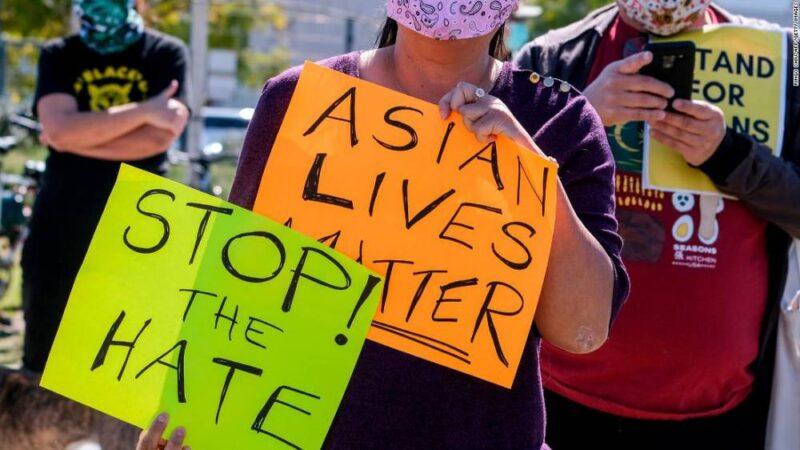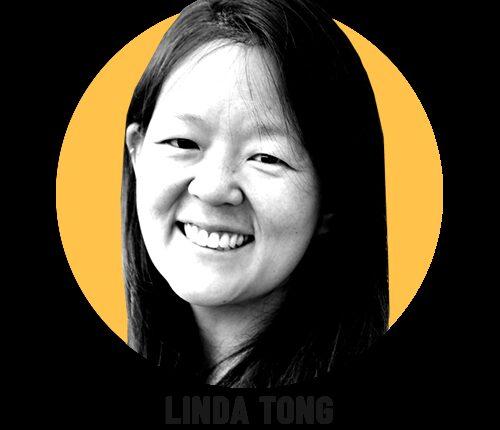Opinion: I’ve dealt with racism as an Asian American. Here’s how business leaders can support the AAPI community
Linda Tong is general manager at AppDynamics, a part of Cisco. The opinions expressed in this commentary are her own.

In middle school, I was mocked for bringing traditional Chinese food (dumplings) for lunch. On a bus shortly after moving to San Francisco, I had been told to go back to my ‘own (insert expletive) country.’ And in front of work colleagues, I was called a ‘ch*nk.’ No one ever blinked.
Until recently, I’d never really acknowledged my experiences of racism as an Asian-American woman growing up and living in the United States. On the back of the shocking recent escalation of violence and online hate against the AAPI community, everything has changed for me.
I can no longer sit by and ignore what is happening to me and my community. I know that as a business leader, I have the opportunity to use my position to make change. I firmly believe the only way to address anti-Asian hate is with action.
Here are some ways leaders can contribute to this solution from the inside out:
Recognize your own feelings and internalized biases
Read MoreMy life has been littered with moments of racism, each shaping my outlook and behavior. Because of that lunch incident, I stopped bringing Chinese food to school and instead begged my mom to get me the most American lunch I could think of: Lunchables. After the incident on the bus, I stopped riding it for over a year. And after the incident with my colleagues, I kept my head down in the workplace and ignored the subtle (and not-so-subtle) jibes.

I'm done ignoring the racism I've faced as an Asian AmericanI was so desperate to fit in with the world around me, I glossed over these instances and focused on assimilating. When I heard reports of racism against other Asian Americans, I always found a way to distance myself. I was a successful, affluent Asian-American woman, with a promising career and a happy, stable personal life. I had so internalized the Model Minority Myth — the idea that Asian American immigrants have played within the rules of the American system to their own group benefit through hard work and assimilation — that when I experienced racism, I modified my behavior instead of rejecting it. I was in denial because I didn’t want to think of myself as a victim.To create change, we must start from within by recognizing how our own experiences and internalized biases have veiled the way we see the world. The first step is recognizing the biases we may have and actively working to question and investigate them. For example, I used to prioritize assertiveness and confidence when hiring team leaders, which many times over rotated to the White male candidate in the room. I am now more actively aware that there are some cultural differences that would result in a candidate being more reserved in an interview, and that isn’t necessarily a reflection of their potential leadership qualities. As hiring managers, we need to recognize that great leaders don’t just fit one mold and that different cultures have a variety of values and traits that should be considered.
Acknowledge the escalation of hate against the AAPI community
Hate crimes against Asian Americans increased 149% in 16 cities from 2019 to 2020, even though hate crimes overall decreased 7% in 15 cities during the pandemic. The idea that my mom or another family member could be on the receiving end of these attacks feels completely real, and that has made me fearful like never before.This fear surfaced within the wider context of prejudice and hate against minority groups across the United States over the past year, and of former President Trump, who fueled anti-Chinese xenophobia daily with repeated references to the “China virus.” This led me to reflect on my life as an Asian woman and as an Asian business leader. I’ve finally started to be honest with myself about my own experiences of racism and their impact. In sharing my personal experiences with mentors, mentees and even broadly to my entire organization, I have tried to bring light to these issues and create a safe space for others to also speak out about their experiences. As business leaders, we cannot be dismissive when it comes to the recent escalation of hate against the AAPI community.
Create clear goals and strategies within your business
Many people within our workforce are hurting right now, after a year in which so many minority groups are under attack. As a business leader, I feel a deep responsibility to ensure everybody that works within AppDynamics feels safe, welcomed and included. Words have very little value without action.Business leaders need clear goals around diversity and comprehensive strategies to achieve them. This includes regular and transparent reporting on progress around diversity and continual feedback for all employees. It also means actively seeking out candidates from underrepresented communities and not relying on the standard candidate pool of “just like us” referrals when hiring. It means training the workforce around unconscious bias and putting in place checks and processes to identify it where it occurs.These are practices we implemented at AppDynamics, and we have a zero-tolerance policy when it comes to racism. We’re focused on creating an inclusive environment that allows all to have a seat at the table and be heard. This is the standard the industry and other leaders should adopt.
Speak out, publicly and loudly
I’m naturally a private person who doesn’t share feelings and opinions openly, at least not beyond my closest family, friends and colleagues. Speaking out isn’t something that comes easily. Now I feel compelled.Recently I signed an open letter alongside hundreds of other Asian-American business leaders to raise awareness of anti-Asian hate in this pivotal moment. For the first time, I publicly committed to address this problem in our society. This is important for me because the initiative was very much action-based; it went beyond simply calling out the problem. We collectively pledged to give $10 million to organizations addressing issues relating to discrimination against the AAPI community. Firm, personal commitments are what make the difference.
Create and foster connections
Most importantly, connections between people are critical to driving change. Only when people come together to have honest conversations can we truly empathize with one another. Diversity brings new ideas and perspectives that reflect the broadest spectrum of our society and the marketplace. This inevitably leads to greater creativity, innovation and engagement.
As leaders, what we can’t do is think we can fix diversity issues with a single solution or program. Every individual has their own experiences of prejudice or hate, so broad brush strokes simply don’t work.We have to ensure that diversity remains at the front and center of our mission by creating clear goals and strategies within our businesses. Words are important, but bold and decisive actions are what will drive credibility and, ultimately, change.
Source: edition.cnn.com

